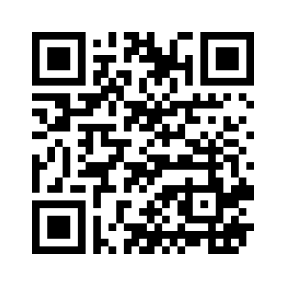If you’ve been searching for the back to work after vacation dream meaning, you’re in the right place. Those vivid “first day back” dreams aren’t random—they’re a signal to protect your energy, clarify priorities, and carry vacation calm into your workweek. Below, you’ll find clear interpretations, practical steps, and tools to turn re-entry stress into sustainable progress.
Make sense of your re-entry dreams with Dreamly — your AI-powered dream journal on Android and iOS.
What the “Back to Work After Vacation” Dream Is Really Telling You
At its core, the back to work after vacation dream meaning blends rest-fueled clarity with real-world pressure. Your mind is rehearsing Day 1 to reduce uncertainty and push you toward better boundaries, better pacing, and better focus. In other words, your subconscious is running a safety check before takeoff.
- Transition anxiety: A rehearsal to switch from freedom to structure without shock.
- Boundary alerts: A nudge to defend time, attention, and recovery windows.
- Identity check: Keep parts of “vacation you” that make “work you” sustainable.
- Readiness cue: Prep the first 90 minutes so you lead, not react.
- Values alignment: Dreams highlight what matters—and what no longer does.

Psychological Insight: Why Your Brain Rehearses Day 1
Post-vacation dreams often combine anticipatory stress with newly restored clarity. Neurocognitively, the brain uses sleep to consolidate learning, simulate challenges, and run “what-if” scenarios. Your dream is not a verdict—it’s a simulation that lets you practice boundaries and priorities safely before the real day begins.
- Uncertainty reduction: Simulation reduces cognitive load when you wake.
- Emotion labeling: Naming the feeling (pressure, guilt, overwhelm) lowers its intensity.
- Prospective memory: Your brain “pins” tasks to prepare you to act on them later.
Key Symbols & What They’re Asking You to Do
- Overflowing inbox: Risk of reactive work → set ruthless triage rules (archive, delegate, schedule—don’t do).
- Missed train or being late: Expectation worries → reset timelines and communicate early.
- Unprepared presentation: Imposter echoes → protect a focused prep block on Day 1.
- Forgotten laptop/badge: Boundary fatigue → simplify tools and cut context switching.
- Empty office: Craving quiet → design your calendar around peak-energy windows.

Common Scenarios & How to Act on Them
- “Everything’s on fire on Day 1.” Anticipatory stress → Action: 90-minute triage: archive, delegate, schedule—don’t do.
- “I can’t find my desk or login.” Role confusion → Action: Re-confirm top 3 outcomes for the next two weeks.
- “The meeting starts while I’m still packing.” Boundary blur → Action: Add a buffer day with no heavy meetings.
- “I miss the plane/train back to work.” Pace mismatch → Action: Trim commitments by 10–20% for Week 1.
- “My calendar is stacked wall-to-wall.” Overcommitment → Action: Decline or convert 2 meetings into async updates.

One-Week Re-Entry Blueprint (Repeat It Every Time)
- Capture the dream (2 min): Emotions + symbols. Patterns = power.
- Keep one ritual: Walk, journaling, or slow coffee—daily.
- Design Day 1: 90 min triage → 60 min deep work → 2–3 short check-ins.
- Set expectations: “Re-entry day—slower responses; urgent = call.”
- Protect focus: Two 60–90 min deep-work blocks for the first 3 days.
- Pick Three Wins: Define and celebrate them Friday.
- Sleep on purpose: Lights-out routine to keep clarity high through the week.
Scripts & Micro-Habits You Can Copy
Email Triage Script
“Thanks for your note. I’m prioritizing re-entry today and will follow up by {DATE}. If urgent, call me.”
Calendar Reset
Two deep-work blocks (AM/PM), 1 admin block, and only one collaboration window per day in Week 1.
Slack/Teams Status
“Re-entry focus today; replies slower. For time-sensitive items, please call.”
Mistakes That Keep the Stress Loop Going
- Diving into replies first: You trade clarity for speed. Triage > schedule > then do.
- Over-promising timelines: Say when you’ll decide, not when you’ll deliver—then update after triage.
- Zero buffers: No space = no strategy. Guard your deep-work windows.
- Dropping your ritual: Keep one vacation habit to anchor your nervous system.
For Managers & Team Leads
Back-to-work dreams also surface team-level friction. Use them as data:
- Declare re-entry norms: No heavy meetings on Day 1; async updates preferred.
- Set fair expectations: Agree on “response by” windows for Week 1.
- Protect deep work: Two protected focus blocks per person per day.
- Model boundaries: Your status and calendar teach the team how to protect theirs.
Track & Decode With Dreamly (Android & iOS)
Use Dreamly to log back-to-work dreams instantly, spot recurring symbols like “lateness,” “inbox,” or “unpreparedness,” and get AI prompts that translate insight into routines that stick.
- Log instantly: Record before details fade (voice or text).
- See patterns: Visualize themes tied to stressors or wins.
- Turn insight into action: Micro-habits tailored to re-entry and focus.
Conclusion: Let Re-Entry Become a Reset
Your back to work after vacation dream meaning is a map, not a warning. Keep what restored you, simplify what drains you, and define your next three wins. With clarity, boundaries, and a few smart rituals, re-entry becomes momentum—not mayhem.
Give your mind a confident runway with Dreamly on Android and iOS.






